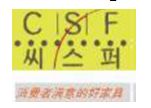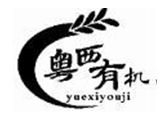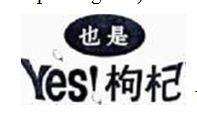We all know that trademarks are mainly used to distinguish different market entities. So, what exactly is a trademark? According to Article 8 of China Trademark Law: Any sign that distinguishes the goods of a natural person, legal person, or other organizations from those of others, including any word, device, letter, number, three-dimensional sign, color combination, sound and combination thereof, may be registered as a trademark.
The legal concept is relatively straightforward, but in practical operations, trademark applications are far from simple. Today, let's discuss the factors that a trademark should ideally avoid including, from the perspective that a trademark might lead to misleading among relevant consumers.
Whether a trademark leads to consumer misleading should be examined starting from Article 10.1.7 of China Trademark Law. This provision states: "Those of fraud that may easily mislead the public in the characteristics such as the quality of goods, or place of production, shall not be used as trademarks." Specifically, it means "marks that make representations about the quality, characteristics, or source of the goods or services they designate that exceed their inherent degree or do not correspond to the facts, are likely to cause the public to have a mistaken understanding of the quality, characteristics, or source of the goods or services."
Misleading mainly includes the following points: 1) Misleading the quality, grade, function, use, raw materials, content, weight, quantity, price, process, technology, and other characteristics of goods or services; 2) Easily causing the public to mislead the place of origin or source of goods or services; 3) Other situations that are likely to cause public misleading.
Regarding the first point, please see some examples listed below:
 Using on dye-related products of
Class 2 (to mislead consumers into thinking that their products
have no defects)
Using on dye-related products of
Class 2 (to mislead consumers into thinking that their products
have no defects)
 Using on furniture-related
products of Class 20 (to mislead consumers into thinking that all
customers are satisfied with their furniture)
Using on furniture-related
products of Class 20 (to mislead consumers into thinking that all
customers are satisfied with their furniture)
 Using on tea-related products of
Class 30 (to mislead consumers into thinking that their products
are all organic)
Using on tea-related products of
Class 30 (to mislead consumers into thinking that their products
are all organic)
![]() Using on liquor-related products
of Class 33 (to mislead consumers into thinking that the quality of
their products is higher and belongs to the superior grade)
Using on liquor-related products
of Class 33 (to mislead consumers into thinking that the quality of
their products is higher and belongs to the superior grade)
 Using on infant food-related
products of Class 5 (to mislead consumers into thinking that their
products contain Lycium chinensis as an ingredient)
Using on infant food-related
products of Class 5 (to mislead consumers into thinking that their
products contain Lycium chinensis as an ingredient)
 Using on financial
management-related services of Class 36 (to mislead consumers into
thinking that the services provided are for the public
interest)
Using on financial
management-related services of Class 36 (to mislead consumers into
thinking that the services provided are for the public
interest)
The misleading of the second point is relatively easier to comprehend, which is that the place names included in the trademark are not the origins of the trademark applicant. For example, the following trademark:
 Using on cosmetic related
products of Class 3 to create the impression that they originate
from Paris
Using on cosmetic related
products of Class 3 to create the impression that they originate
from Paris
Based on the search on the CNIPA's website, it has been found that a large number of trademarks containing "Paris" have already been invalidated. Most of these trademark registrants are not from Paris itself. Therefore, when applying for a trademark, if it is necessary to include a geographical name, it should only be a name that genuinely indicates the place of origin. However, even in this case, there is an additional risk of rejection due to the inclusion of a geographical name.
In light of the case provided and the recent rejection notices received, we have observed that the use of certain laudatory terms on specific goods may lead consumers to overestimate their quality, thereby misleading consumer perception.
Therefore, in the process of trademark application, we recommend:
- Refrain from using laudatory terms such as "优异, 好, Good," etc.;
- Avoid using words similar to the "raw materials, weight, quantity, price, craftsmanship" of the products provided, such as "24K, 有机, 绿色, Green," etc.;
- If you do not originate from a particular region or city, do not include the name of that region or city;
- If the trademark applied for includes the name of a business, it must be consistent with the applicant's business name or organizational form, and it cannot be merely the full name of the enterprise itself, otherwise, the trademark may be rejected due to a lack of distinctiveness.
The content of this article is intended to provide a general guide to the subject matter. Specialist advice should be sought about your specific circumstances.


